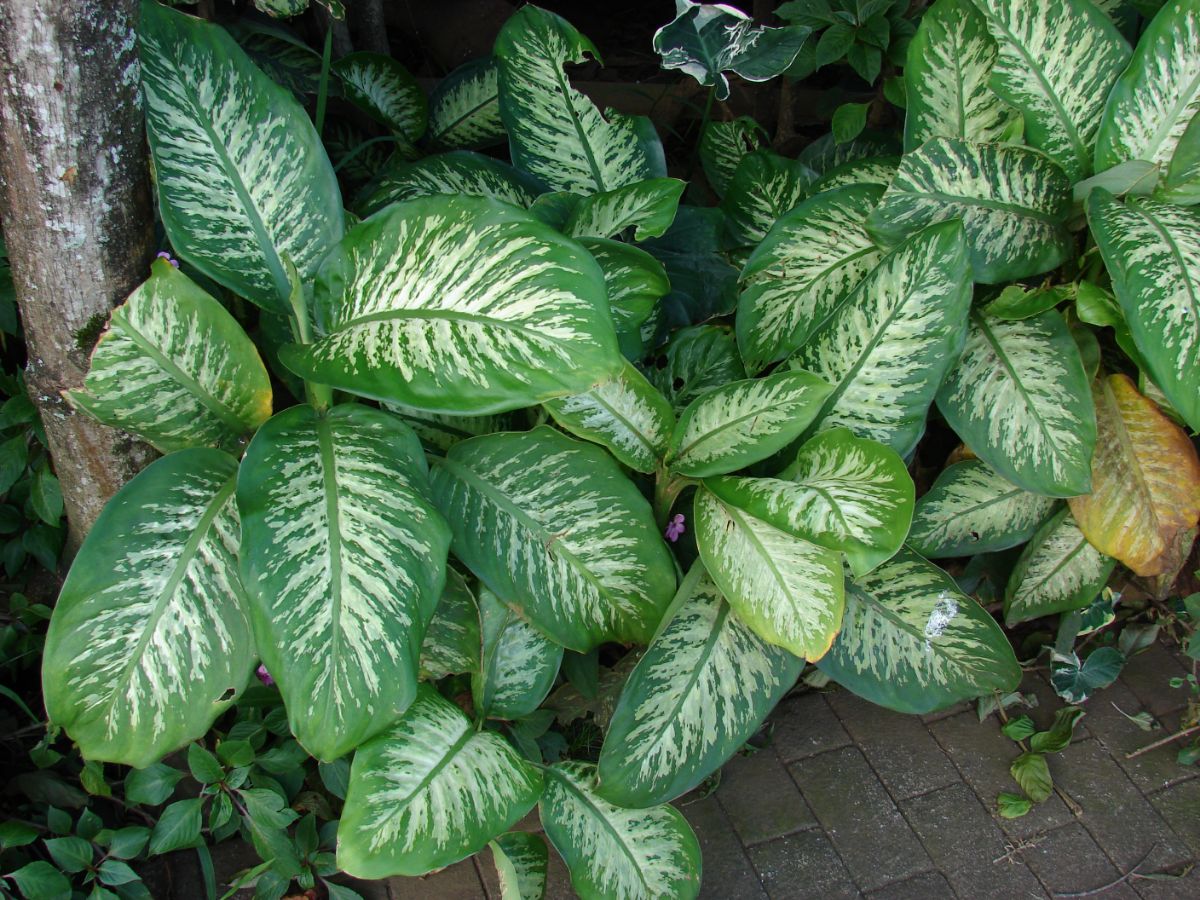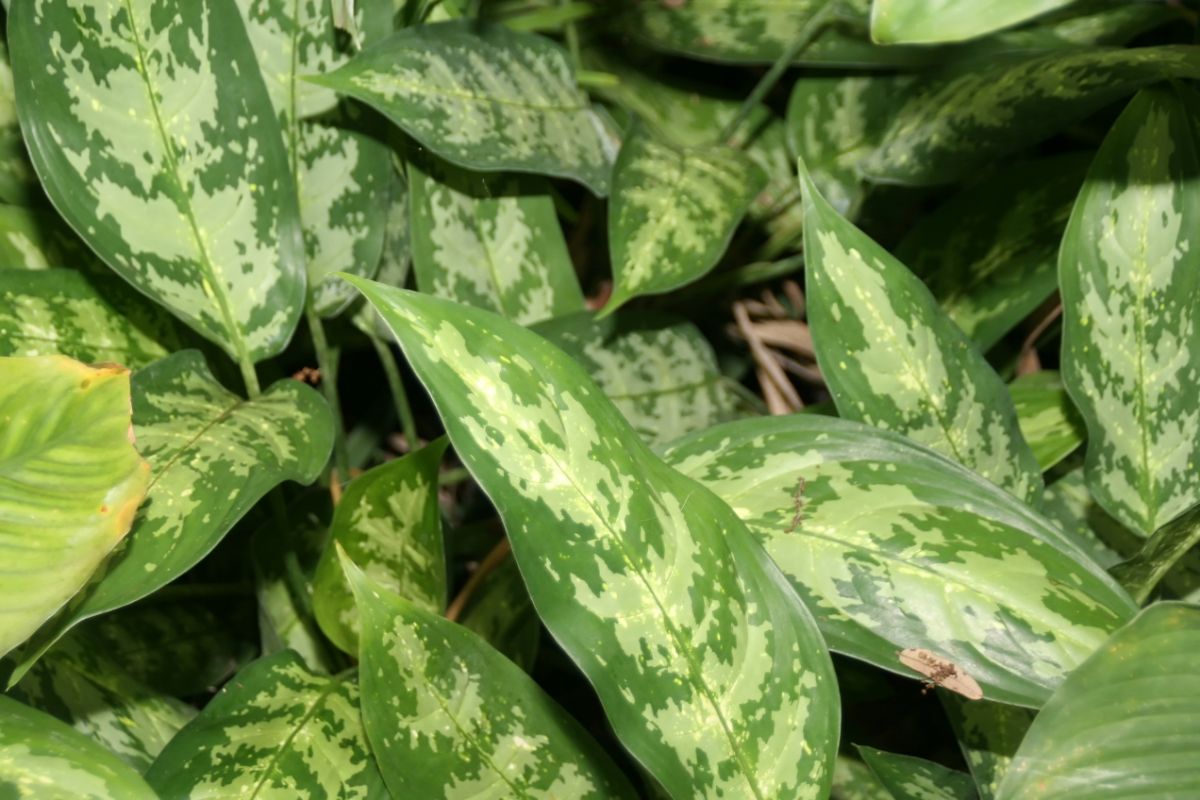
If we name some of the most common indoor plants in homes, there is no doubt that the Dieffenbachia seguine is one of them. This tropical plant is not so "touchy" that you have to keep an eye on it all the time. Dieffenbachia seguine care is very easy to follow.
And, in return, it offers you a size and leaves that will draw the attention of anyone who passes by, and will inevitably end up caressing them (although you have to bear in mind that it leaves you with an itchy sensation). But what care do you have? We tell you.
How is the Dieffenbachia seguine

Dieffenbachia seguine, also known as Diefembaquia, Dieffenbachia picta or Dieffenbachia maculada, is a tropical plant. Its origin is in Brazil and is characterized by having oval and lanceolate leaves. They are pale green in color while the edges and also the vein are cream in color.
If you take good care of it, you can easily reach two meters in height and in addition to this it has an exotic variation in which the leaves are greener and have that cream color in the center.
Keep in mind that, although the plant has flowers, it is very difficult, even impossible, for it to flower inside the house. But if it is outdoors, you will have more opportunities.
Another important point you should know about her is that it is poisonous. All of her. Completely. The reason is that it has calcium oxalate crystals that are long and sharp. Therefore, if you rub against the leaves, you will notice a sticky and itchy sensation in your hand, which irritates your skin. That is its “defense”, but at the same time it makes it a plant to keep far away from children and pets.
Dieffenbachia seguine: important care

Now that you know what Dieffenbachia seguine is like, the next step is to know how to care for it so that you can enjoy it for a long time. And for that, we tell you here.
Location
Dieffenbachia seguine is a plant that needs a lot of light. It loves being near a window because it will make it take out more veins in the leaves. But he does not tolerate direct sun.
As for whether it is indoors or outdoors, we put you in context. If where you live there is a mild climate throughout the year, then you can leave it outside. But it is not usual, normally you choose to always put it inside the house.
Temperature
Within the care of Dieffenbachia seguine, temperature is one of the most important. And it is that the optimum for the plant is between 20 and 30 degrees in summer and between 15 and 18 degrees Celsius in winter.
It does not like the cold at all, nor does it like air, so you have to place it in a place where it will not suffer with these.
Earth
The substrate that you must use must have good drainage since the roots of the plant do not like waterlogging at all.
The recommendation that we can give you is that you use a mix with peat, beech leaves and coarse drainage such as akadama (although it is more focused on bonsai, being large benefits the breathing of the roots of this plant).
Make sure the pH is somewhat acidic, between 5,5 and 6,5.
Transplant
Related to the above, transplants should only be done when the pot has already outgrown it, never before. In general, this can happen every 2-3 years and it is the moment in which you should renew the soil so that it has more substrate.
In this transplant is when you can separate the "suckers", that is, the small trunks that may have appeared (or are incipient) and that will give new plants.
Irrigation
Watering is one of the most important care for Dieffenbachia seguine. You might think that, being a tropical plant, it needs a lot of water, but the truth is that this is not the case. Actually, it needs good humidity more than good watering.
Therefore, we recommend that you water to keep the soil moist but nothing more. And, in return, that you subject her to a humidity between 80-90%. You can achieve this by placing it on top of a plate with pebbles and water and spraying the plant regularly so that it stays healthy (if that water is from rain, much better).

Fertilizer
El Fertilizing Dieffenbachia seguine is done from spring to the end of summer. It must be provided every 15 days and always with a dose somewhat lower than that which the manufacturer tells us.
As for which one is more suitable, choose a fertilizer for leafy plants.
Now, as the end of summer approaches, you have to reduce the fertilizer until, during the winter, it is not added (even so, there are some who advise adding it once a month).
Pruning
The only care you should take into account is that you should remove the leaves that are drying, with the aim that they are not a focus of infection of parasitic diseases.
Of course, before touching it, you better protect yourself and above all disinfect the tools that you are going to use (and after using them too).
Plagues and diseases
This plant is Susceptible to cottony mealybug and red spider mite. The first can be removed with tweezers and by cleaning the entire plant with a cloth soaked in alcohol. For its part, the second could be removed with moisture.
As for diseases, most of them have to do with the scarcity or excess of water and/or light.
Multiplication
Another care of the Dieffenbachia seguine is its reproduction. know that you can do it by cutting. To do this, what you have to do is cut a stem 5-10 centimeters long in spring.
You have to remove the leaves that are lower and dip the stem in rooting powder to encourage it to create roots.
Then, it will be enough to plant it and cover it with a transparent plastic bag so that it is kept at a temperature of about 25 degrees. Make sure that the soil is always slightly moist (without wetting the cuttings) and control the humidity.
When the cuttings have rooted you will see that the first shoots begin to come out and so you can remove the bag and put them in a brighter place (but with the same temperature). Only when you see that they are large enough can you transplant the cuttings to another pot.
As you can see, the care of Dieffenbachia seguine is not complicated at all. Do you have this plant at home? How are you doing with her?